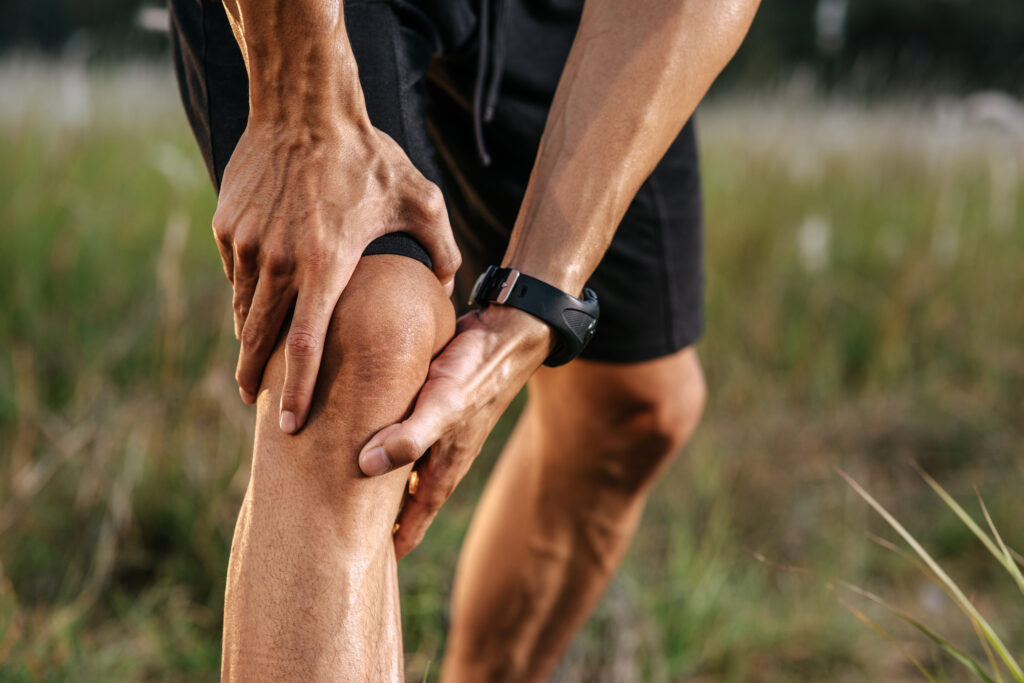When you're maneuvering the demands of athletic performance, understanding the reliable treatment options available can make all the difference in your recovery and success. From traditional physical therapy to innovative regenerative medicine, each approach offers unique benefits tailored to your specific needs. You might be surprised at how nutritional support and alternative therapies like acupuncture can play a role in your overall well-being. But with so many options out there, which treatments truly stand out? Exploring these possibilities could reshape your training and recovery strategies.
Traditional Physical Therapy
Engaging in traditional physical therapy can be a game-changer for athletes recovering from injuries or seeking to enhance their performance. When you work with a qualified physical therapist, you gain access to tailored treatment plans that focus on your unique needs. These professionals assess your condition, helping you understand the extent of your injury and the steps necessary for recovery.
One of the core components of traditional physical therapy is manual therapy, which includes hands-on techniques to improve mobility and reduce pain. You'll experience targeted exercises designed to strengthen specific muscle groups, improve flexibility, and restore range of motion. By actively participating in these exercises, you not only expedite your recovery but also learn how to prevent future injuries.
Another essential aspect is the education you receive. Your therapist will guide you through proper body mechanics, ensuring you maintain good posture and movement patterns during training or competition. This knowledge empowers you to make better choices as you push your limits.
Moreover, traditional physical therapy isn't just about recovery; it can also enhance your overall athletic performance. By addressing imbalances and weaknesses, you can optimize your physical abilities and achieve your goals more effectively.
Incorporating traditional physical therapy into your routine can lead to a more thorough understanding of your body, improved performance, and a quicker return to your favorite sports.
Sports Rehabilitation Techniques
When recovering from an injury, utilizing sports rehabilitation techniques can greatly enhance your recovery process.
These techniques are designed to help you regain strength, flexibility, and functionality, allowing you to return to your sport safely and effectively.
Whether you're dealing with a sprain, strain, or more serious injury, implementing the right strategies can make all the difference.
Here are some key sports rehabilitation techniques you should consider:
- Active Release Therapy (ART): This hands-on approach helps release tension in muscles and fascia, promoting healing and mobility.
- Functional Movement Training: Focusing on movements that mimic your sport can improve coordination and strength, making your recovery more sport-specific.
- Therapeutic Exercise: Engaging in targeted exercises can restore strength and range of motion, helping to prevent re-injury.
- Neuromuscular Re-education: This technique works on improving balance, proprioception, and coordination, which are essential for athletes.
- Aquatic Therapy: Water resistance can aid in gentle movement and strength building while reducing joint stress during recovery.
Incorporating these techniques into your rehabilitation plan can help you recover faster and more effectively.
Always consult with a qualified sports rehabilitation professional to tailor a program that addresses your specific needs.
Remember, the goal is to return to your sport stronger and more resilient than before.
Chiropractic Care
Chiropractic care can play an essential role in your athletic performance and overall well-being.
By focusing on techniques and approaches that enhance mobility, it helps prevent injuries and supports recovery.
Understanding the benefits of chiropractic care can give you a competitive edge and keep you in the game longer.
Benefits of Chiropractic Care
For athletes, the benefits of chiropractic care can be significant in enhancing performance and preventing injuries. Regular chiropractic adjustments can help you maintain ideal spinal alignment, which is essential for peak athletic performance.
Here are some key benefits of chiropractic care for athletes:
- Improved Range of Motion: Adjustments can enhance flexibility and mobility, allowing you to perform better in your sport.
- Pain Relief: Chiropractic care targets the root causes of pain, reducing reliance on medications and promoting natural healing.
- Injury Prevention: By identifying and addressing misalignments, chiropractic care helps you avoid injuries before they occur.
- Enhanced Recovery: Regular sessions can speed up recovery times, getting you back in the game sooner after intense workouts or injuries.
- Better Posture: Improved posture can lead to more efficient movement patterns, reducing strain on your body during physical activities.
Incorporating chiropractic care into your training regimen can lead to long-term benefits, ensuring you stay at the top of your game while minimizing the risk of injuries.
It's a proactive approach that supports both performance and overall wellness.
Techniques and Approaches
Maintaining ideal performance and preventing injuries relies not just on the benefits of chiropractic care but also on the various techniques and approaches employed by practitioners. One popular method is spinal manipulation, which helps realign your spine and relieve pressure on nerves. This can enhance your flexibility and range of motion, essential for peak athletic performance.
Another effective approach is soft tissue therapy, where chiropractors focus on muscles, tendons, and ligaments. This technique can alleviate tension and improve circulation, allowing your muscles to recover faster.
Active Release Technique (ART) is another method that targets specific areas of tightness, enabling you to regain peak movement.
Moreover, many chiropractors incorporate rehabilitation exercises into their treatment plans. These exercises not only help you recover from injuries but also strengthen your body, making you more resilient against future issues.
Additionally, modalities like ultrasound and electrical stimulation can be used to promote healing and reduce pain.
Injury Prevention Strategies
While injuries can sideline any athlete, implementing effective prevention strategies through chiropractic care can greatly reduce the risk.
By focusing on alignment, flexibility, and strength, chiropractic care helps you maintain peak performance and minimizes the chance of injury. Regular visits can enhance your body's natural ability to withstand physical stress, ensuring you stay in the game longer.
Here are some key injury prevention strategies you can incorporate:
- Regular Adjustments: Keep your spine and joints aligned to improve mobility and function.
- Flexibility Training: Engage in stretching routines to enhance your range of motion and reduce muscle tension.
- Strength Conditioning: Build strength in key muscle groups to support your joints and prevent strains.
- Biomechanical Assessments: Get evaluated to identify and correct movement patterns that could lead to injuries.
- Education on Posture: Learn proper body mechanics to avoid unnecessary stress during training and competition.
Acupuncture and Alternative Therapies
As athletes seek ways to enhance recovery and manage pain, many are turning to acupuncture and alternative therapies. These methods can offer relief from muscle soreness, improve flexibility, and help you bounce back from injuries.
Acupuncture, a traditional Chinese practice, involves inserting thin needles into specific points on your body. This technique aims to stimulate your body's natural healing processes and promote better blood flow, which can be particularly beneficial after intense training sessions.
You might find that acupuncture not only alleviates pain but also reduces stress and anxiety, allowing you to focus more on your performance. Many athletes report experiencing improved sleep patterns after treatment, which is vital for recovery.
Alongside acupuncture, other alternative therapies like massage therapy, chiropractic care, and yoga can also play significant roles in your recovery regimen.
Massage therapy helps to relieve tension in your muscles, while chiropractic care focuses on aligning your spine and improving overall mobility. Yoga combines physical postures with mindfulness, enhancing both your physical and mental resilience.
Before diving into these treatments, it's important to consult with a healthcare professional who understands your specific needs as an athlete. They can guide you on which therapies might best complement your training and recovery strategies.
Nutritional Support and Supplements
To fuel your athletic performance and recovery, nutritional support and supplements play an indispensable role. Proper nutrition can enhance your strength, endurance, and overall well-being, allowing you to train harder and recover faster.
It's crucial to focus on a balanced diet rich in whole foods, but supplements can also provide additional benefits when used correctly.
Consider integrating the following supplements into your routine:
- Protein Powder: Helps in muscle recovery and growth, especially post-workout.
- Creatine: Boosts strength and enhances high-intensity performance.
- Branched-Chain Amino Acids (BCAAs): Reduces muscle soreness and supports recovery.
- Omega-3 Fatty Acids: Promotes heart health and reduces inflammation.
- Electrolytes: Replenishes lost minerals during intense workouts, maintaining hydration and performance.
It's important to remember that supplements should complement a well-rounded diet, not replace it. Focus on whole food sources for your daily nutrients, such as lean meats, fruits, vegetables, and whole grains.
Before starting any supplement regimen, consult a healthcare professional or a registered dietitian to verify it aligns with your personal health goals and needs.
Finally, listen to your body. Pay attention to how different foods and supplements affect your performance and recovery. Adjust your nutrition plan as necessary, and you'll find the right balance that helps you achieve your athletic aspirations.
Regenerative Medicine Approaches
Athletes often seek innovative ways to enhance recovery and performance, and regenerative medicine offers promising options. These cutting-edge treatments focus on harnessing the body's natural healing capabilities to repair damaged tissues and alleviate pain. If you're dealing with injuries that just won't heal, regenerative medicine might be worth exploring.
One common approach is platelet-rich plasma (PRP) therapy, where your blood is drawn, processed to concentrate the platelets, and then injected back into the injured area. This concentrated solution can stimulate tissue repair and promote healing by delivering growth factors directly to the site of injury. Many athletes find this method effective for tendon injuries, joint pain, and muscle strains.
Another exciting option is stem cell therapy. By using stem cells, either harvested from your own body or from donors, this treatment aims to regenerate damaged tissues. Stem cells have the unique ability to develop into various cell types, potentially speeding up recovery from injuries like ligament tears or cartilage damage.
Tissue engineering is also gaining traction in regenerative medicine. This approach combines cells with scaffolding materials to create new tissues, which can be implanted into the body. It's particularly promising for conditions that involve severe tissue loss.
While these treatments show great potential, it's crucial to consult with a qualified healthcare provider to determine the best approach for your specific needs. Regenerative medicine may not be a one-size-fits-all solution, but it could be the key to revealing your ideal performance and recovery.
Cryotherapy and Heat Therapy
When it comes to recovery, cryotherapy and heat therapy are two popular techniques that can help you manage pain and enhance performance.
Both methods offer unique benefits and can be easily integrated into your routine, depending on your specific needs.
Cryotherapy involves exposing your body to extremely cold temperatures for a short period. This approach can help reduce inflammation, speed up recovery, and alleviate pain.
On the other hand, heat therapy increases blood flow and relaxes muscles, making it ideal for easing tension and soreness.
Here are some key benefits of each technique:
- Cryotherapy:
- Reduces inflammation and swelling
- Speeds up muscle recovery
- Alleviates pain and discomfort
- Boosts metabolism and energy levels
- Enhances mood and mental clarity
- Heat Therapy:
- Increases blood circulation
- Relaxes tight muscles and joints
- Eases stiffness and soreness
- Improves flexibility and range of motion
- Promotes relaxation and stress relief
Choosing between cryotherapy and heat therapy often depends on the type of injury or discomfort you're experiencing.
For acute injuries, like sprains, cryotherapy might be your best bet.
Conversely, for chronic conditions or muscle tightness, heat therapy could provide the relief you need.
Experiment with both methods to discover what works best for your body and recovery goals.
Mental Health and Counseling
As an athlete, mental resilience is just as essential as physical strength.
You might face pressures that impact your performance and well-being, so accessing professional support can be a game changer.
Understanding how to prioritize your mental health can make all the difference in your athletic journey.
Importance of Mental Resilience
Mental resilience plays an essential role in an athlete's overall performance and well-being.
It's the mental toughness that helps you bounce back from setbacks, cope with stress, and maintain focus during competition. Developing this resilience isn't just about being tough; it's about fostering a mindset that can adapt and thrive under pressure.
Here are some key aspects of mental resilience that you should consider:
- Positive Self-Talk: Replacing negative thoughts with positive affirmations can boost your confidence.
- Goal Setting: Establishing clear, achievable goals helps you stay focused and motivated.
- Mindfulness Practices: Techniques like meditation and deep breathing can enhance your awareness and reduce anxiety.
- Visualization: Imagining success can prepare your mind and body for performance, improving execution.
- Support Systems: Surrounding yourself with supportive teammates, coaches, and friends can provide encouragement during tough times.
Accessing Professional Support
Accessing professional support, such as mental health counseling, can be a game-changer for athletes looking to enhance their performance and well-being. When you face the pressures of competition, balancing your training and personal life, it's easy to feel overwhelmed.
A licensed mental health professional can help you develop coping strategies, manage anxiety, and improve focus. Counseling sessions provide a safe space to express your thoughts and feelings without judgment.
You'll learn to recognize and challenge negative thought patterns that can hinder your performance. Furthermore, a counselor can help you set realistic goals and develop a mental toolkit tailored to your specific needs as an athlete.
It's important to seek support when needed. Don't hesitate to reach out to your coach or teammates for recommendations on trusted mental health professionals.
Many organizations also offer resources specifically designed for athletes, making it easier to find the right fit.
Conclusion
In conclusion, you've got a variety of reliable treatment options to enhance your athletic performance and recovery. From traditional physical therapy and chiropractic care to nutritional support and innovative regenerative medicine, each approach offers unique benefits. Don't overlook the importance of mental health and alternative therapies like acupuncture and cryotherapy either. By exploring these options, you can optimize your training, manage injuries effectively, and maintain overall well-being, ensuring you stay at the top of your game.



